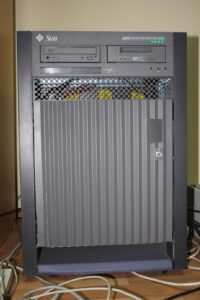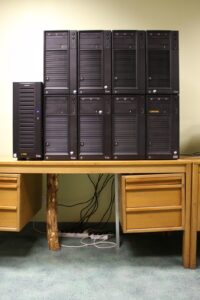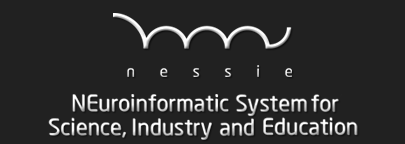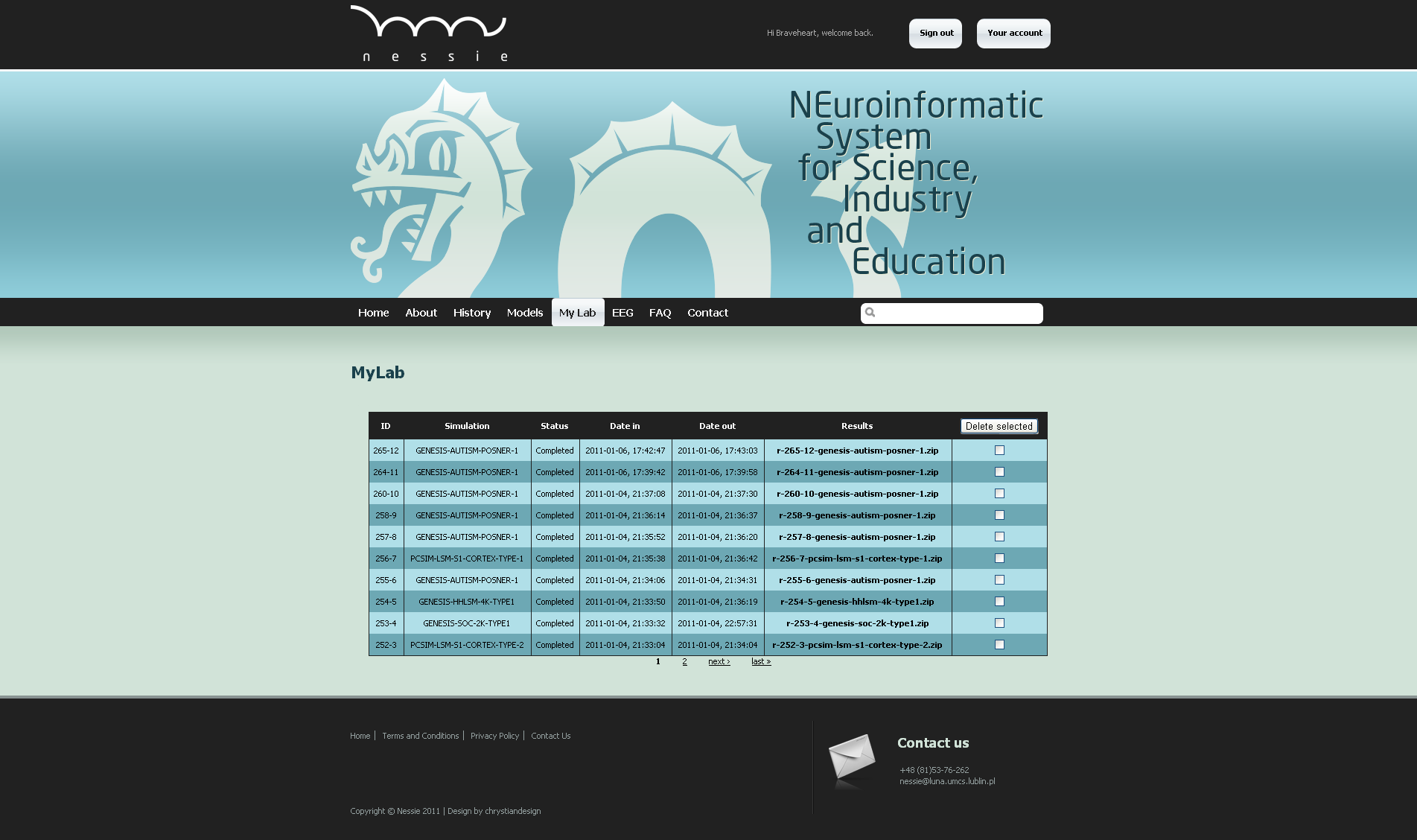The Lab 303 Est. 2012 at the Department of Neuroinformatics and Biomedical Engineering, Maria Curie-Sklodowska University in Lublin is equipped with the dense array amplifier recording the cortical activity with up to 1000 Hz frequency through 256 channels HydroCel GSN 130 Geodesic Sensor Nets provided by EGI (Electrical Geodesic Systems, Inc., 500 East 4th Ave. Suite 200, Eugene, OR, 97401, USA). In addition, in the EEG Laboratory the Geodesic Photogrammetry System (GPS) was used. Eleven cameras placed in the corners of GPS take a set of subject’s photos and then it is possible to make a model of the particular subject brain based on its calculated size, proportion and shape. Next the software imposes all computed activity results on this model with a very good accuracy. The amplifier operates on the Net Station 4.5.4 software, GPS is under control of the Net Local 1.00.00 and GeoSource 2.0. The eye blinks and saccades elimination as well as gaze calibration are obtained owing to the application of dedicated eye-tracker operated by SmartEye 5.9.7. The Event-Related Potentials (ERP) experiments are conducted in the PST e-Prime 2.0.8.90 environment or current version of OpenSesame.

PhDs completed under my supervision
Katarzyna Zemła. Examining the efficacy of Guided Imagery relaxation technique in reducing stress, modulating brain wave activity and enhancing attention control. Wydział Psychologii Uniwersytetu SWPS, Warszawa, 2025. Rozprawa doktorska. Nauki psychologiczne. Psychologia
Bernadetta Bartosik. A method for measuring trust and attractiveness of presented faces based on brain activity measurements and machine learning. Wydział Informatyki Polsko-Japońskiej Akademii Technik Komputerowych, Warszawa, 2023. Rozprawa doktorska. Nauki inżynieryjno-techniczne. Informatyka techniczna i telekomunikacja
Karol Chlasta. Neural Simulation Pipeline for Liquid State Machines. Wydział Informatyki Polsko-Japońskiej Akademii Technik Komputerowych, Warszawa, 2023. Rozprawa doktorska. Nauki inżynieryjno-techniczne. Informatyka techniczna i telekomunikacja
Łukasz Kwaśniewicz. Metoda pomiaru wiarygodności wiadomości wykorzystująca elektroencefalografię ilościową i sztuczną inteligencję. Wydział Informatyki Polsko-Japońskiej Akademii Technik Komputerowych, Warszawa, 2023. Rozprawa doktorska. Nauki inżynieryjno-techniczne. Informatyka techniczna i telekomunikacja
Andrzej Kawiak. Metoda pomiaru wiarygodności źródła wykorzystująca elektroencefalografię ilościową i uczenie maszynowe. Wydział Informatyki Polsko-Japońskiej Akademii Technik Komputerowych, Warszawa, 2023. Rozprawa doktorska. Nauki inżynieryjno-techniczne. Informatyka techniczna i telekomunikacja
Piotr Schneider. Modelowanie i predykcja decyzji o prawdziwości lub nieprawdziwości informacji na podstawie bioelektrycznej aktywności mózgu. Wydział Informatyki Polsko-Japońskiej Akademii Technik Komputerowych, Warszawa, 2023. Rozprawa doktorska. Nauki inżynieryjno-techniczne. Informatyka techniczna i telekomunikacja
Anna Gajos-Balińska. Metodyka optymalizacji czasowej algorytmu fastICA w elektroencefalografii gęstej matrycy z wykorzystaniem możliwości wielordzeniowych architektur. Wydział Elektrotechniki i Informatyki Politechniki Rzeszowskiej, Rzeszów, 2021. Rozprawa doktorska. Nauki inżynieryjno-techniczne. Informatyka techniczna i telekomunikacja
Selected papers that came out of the Lab 303
F. Postepski, G. M. Wojcik, K. Wrobel, A. Kawiak, K. Zemla, and G. Sedek, “Recurrent and convolutional neural networks in classification of eeg signal for guided imagery and mental workload detection,” Scientific Reports, vol. 15, no. 1, p. 10521, 2025.
F. Postepski, G. M. Wojcik, K. Wrobel, A. Kawiak, K. Zemla, and G. Sedek, “Recurrent and convolutional neural networks in classification of eeg signal for guided imagery and mental workload detection,” arXiv preprint arXiv:2405.16901v2, 2024.
K. Zemla, G. Sedek, K. Wróbel, F. Postepski, and G. M. Wojcik, “Investigating the impact of guided imagery on stress, brain functions, and attention: A randomized trial,” Sensors, vol. 23, no. 16, p. 6210, 2023.
B. Bartosik, G. M. Wojcik, A. Kawiak, and A. Brzezicka, “How are the people in the photos judged analysis of brain activity when assessing levels of trust and attractiveness,” arXiv preprint arXiv:2306.09171, 2023.
K. Zemla, G. M. Wojcik, F. Postepski, K. Wróbel, A. Kawiak, and G. Sedek, “Modeling of brain cortical activity during relaxation and mental workload tasks based on eeg signal collection,” Applied Sciences, vol. 13, no. 7, p. 4472, 2023.
G. M. Wojcik, O. Shriki, L. Kwasniewicz, A. Kawiak, K. Wróbel, B. Bartosik, Y. ben-Horin, S. Furman, E. Panas, “Investigating brain cortical activity in patients with post-COVID-19 brain fog.” Front. Neurosci. Sec. Brain Imaging Methods, Volume 17 – 2023 |doi: 10.3389/fnins.2023.1019778.
P. Schneider, G. M. Wójcik, A. Kawiak, L. Kwasniewicz, and A. Wierzbicki, “Modeling and comparing brain processes in message and earned source credibility evaluation,” Frontiers in Human Neuroscience, vol. 16, 2022.
L. Kwasniewicz, G. M. Wojcik, P. Schneider, A. Kawiak, and A. Wierzbicki, “What to believe? impact of knowledge and message length on neural activity in message credibility evaluation,” Frontiers in Human Neuroscience, vol. 15, p. 659243, 2021. B.
Bartosik, G. M. Wojcik, A. Brzezicka, and A. Kawiak, “Are you able to trust me? analysis of the relationships between personality traits and the assessment of attractiveness and trust,” Frontiers in Human Neuroscience, p. 389, 2021.
G. M. Wójcik, A. Kawiak, P. Schneider, L. Kwasniewicz, and A. Wierzbicki, “Whom to believe? understanding and modeling brain activity in source credibility evaluation,” Frontiers in Neuroinformatics, vol. 14, p. 60, 2020.
G. M. Wójcik, J. Masiak, A. T. Kawiak, L. K. Kwasniewicz, P. Schneider, F. Postepski, and A. Gajos-Balinska, “Analysis of decision-making process using methods of quantitative electroencephalography and machine learning tools,” Frontiers in Neuroinformatics, vol. 13, p. 73, 2019.
G. M. Wojcik, J. Masiak, A. Kawiak, L. Kwasniewicz, P. Schneider, N. Polak, and A. Gajos-Balinska, “Mapping the human brain in frequency band analysis of brain cortex electroencephalographic activity for selected psychiatric disorders,” Frontiers in Neuroinformatics, vol. 12, p. 73, 2018.
G. M. Wójcik, J. Masiak, A. Kawiak, P. Schneider, L. Kwasniewicz, N. Polak, and A. Gajos-Balinska, “New protocol for quantitative analysis of brain cortex electroencephalographic activity in patients with psychiatric disorders,” Frontiers in Neuroinformatics, vol. 12, p. 27, 2018.
History
Brain – Sun Enterprise 3000 Ultra, 6x Ultra Sparc II 333 MHz, 4 GB RAM, HDD: 72 GB
In 1998, it was the fastest computer on the right bank of the Vistula River, covering half of Poland. The machine was acquired by Prof. Wiesław Andrzej Kamiński, who was both my master’s and PhD thesis supervisor, as well as my academic mentor. It was the machine on which I had dreamed of working, although I eventually developed a passion for computational neuroscience.

Lomond – 16 × Intel Xeon Quad Core 4 × E5320 1.86 GHz: 12 × E5405 2 GHz, RAM: 8 × 8 GB HDD: 8 × 1 TB
The cluster I built with my first grants in 2007 had significantly greater computational power than the Brain. It was named after the cluster installed at the Edinburgh Parallel Computing Centre (EPCC), where I worked in 2005. Loch Lomond, a magnificent Scottish loch, inspired the name. Most of my Hodgkin-Huxley Liquid State Machine (HHLSM) simulations, including those in the NESSIE environment, ran on that machine. It remained operational until 2024, primarily for educational purposes.

NESSIE
In 2010, we developed NESSIE – The Neuroinformatic System for Science, Industry, and Education. Since then, it has been possible to schedule and run all of my simulations, including Hodgkin-Huxley Liquid State Machines ensembles, in both GENESIS and PCSIM environments. The system was installed on the Lomond cluster with Luna access node.


